The Interconnectedness of Humans and Trees
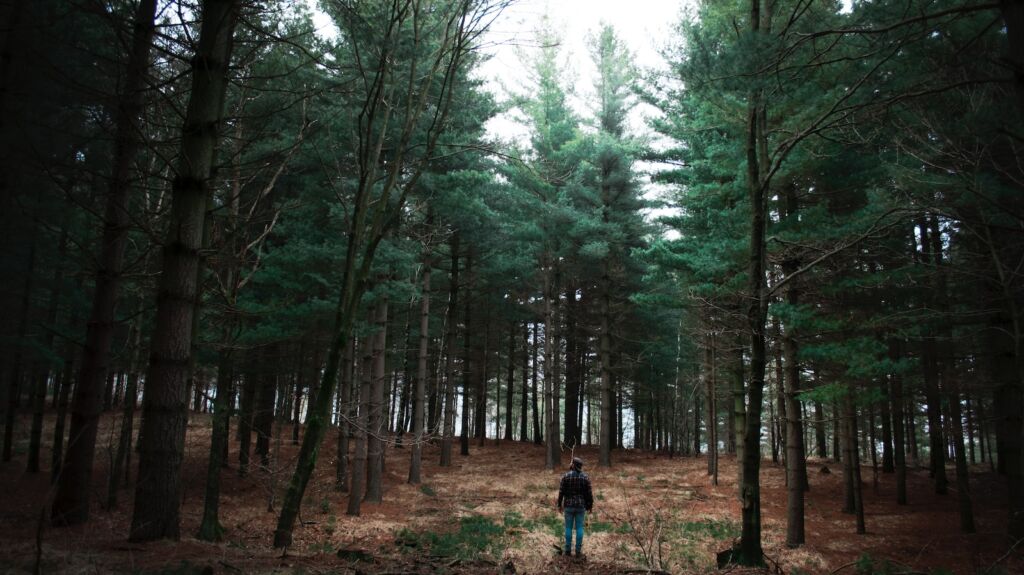 Forests cover round 30% of the planet’s surface. Trees are essential to the survival of the human race and are, at the same time, revered and ignored. They represent life and growth, knowledge and wisdom, power and prosperity. Even in today’s modern, concrete jungles, trees can always be found – whether lining the pavements or claiming a precious patch of open green space. Yet, we’re so accustomed to them, they’ve become largely neglected in our human-centric, technology-driven lives.
Forests cover round 30% of the planet’s surface. Trees are essential to the survival of the human race and are, at the same time, revered and ignored. They represent life and growth, knowledge and wisdom, power and prosperity. Even in today’s modern, concrete jungles, trees can always be found – whether lining the pavements or claiming a precious patch of open green space. Yet, we’re so accustomed to them, they’ve become largely neglected in our human-centric, technology-driven lives.
Nature, as a whole, has always been used as a storytelling tool in fiction writing but there is

something about the majesty of trees which evokes such powerful symbolism depicting the profound and enduring connection between humanity and the natural world.
I’ve recently read two novels which celebrate the perpetual value of trees and the impact they have on the lives of people – often without us even realising it.
Still Life by Sarah Winman and The Island of Missing Trees by Elif Shafak are two novels which use the interconnectedness of humans and trees to discuss the complexities of certain themes, such as the cyclical nature of time, the impact of conflict and migration, and differing types of love and relationships.
Conflict and Migration
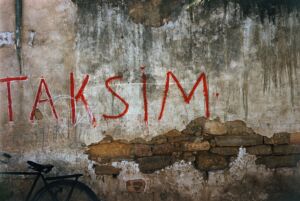 Both novels are set against a backdrop of conflict – post-war London and Tuscany in Still Life and the 1974 Cypriot civil war in The Missing Island of Trees. In Still Life, the gloomy greyness of post-war London is contrasted with the colourful richness of Tuscany. Italy is where the characters, initially only main protagonist, Ulysses, with his daughter Kid and close friend Cressy, escape to and find freedom and fulfilment. Kostas and Defne, on the other hand, flee Cyprus to find peace in England. They are from opposing sides as Defne is Turkish and Kostas, Greek so, not only has the relationship been shunned by their families, but it’s also too dangerous for them as a couple in their home country. Freedom, therefore, comes at a price.
Both novels are set against a backdrop of conflict – post-war London and Tuscany in Still Life and the 1974 Cypriot civil war in The Missing Island of Trees. In Still Life, the gloomy greyness of post-war London is contrasted with the colourful richness of Tuscany. Italy is where the characters, initially only main protagonist, Ulysses, with his daughter Kid and close friend Cressy, escape to and find freedom and fulfilment. Kostas and Defne, on the other hand, flee Cyprus to find peace in England. They are from opposing sides as Defne is Turkish and Kostas, Greek so, not only has the relationship been shunned by their families, but it’s also too dangerous for them as a couple in their home country. Freedom, therefore, comes at a price.
It’s not only the human characters in these two novels who are outsiders in the places they live. A stranger to England, the Japanese cherry blossom in Still Life thrives amongst the city concrete, illustrating that beauty can still be found within the grim reality of London. Cressy is forced to leave it behind when he relocates to Italy but takes the love that he’s nurtured with him in his heart.
We’re first introduced to the fig tree in its native home of Cyprus. There it grows inside a local taverna which is the secret meeting place for Kostas and Defne. When civil war breaks out, the taverna is bombed and the fig tree begins its demise. Kostas takes a healthy cutting with him when he moves to the UK and lovingly tends to it as it grows. Both the fig tree and the cherry blossom represent survival, particularly in times of war.
“Because that is what migrations and relocations do to us: when you leave your home for unknown shores, you don’t simply carry on as before; a part of you dies inside so that another part can start all over again.”
Elif Shafak – The Island of Missing Trees
Life Cycles and Time
 In Still Life, the Japanese cherry blossom portrays the circle of life – it’s an emblem of, not only survival, but also death. Hailing from foreign lands, it’s managed to adapt to a different climate and environment, and even avoid destruction during the Blitz but, ultimately, it will expire, as will us all. Cressy, a close friend of the main protagonist, Ulysses, has a bond with nature that remains unbroken even after death as his ashes are scattered on the earth, “and there they left Cress to become a tree.” (Sarah Winman, Still Life).
In Still Life, the Japanese cherry blossom portrays the circle of life – it’s an emblem of, not only survival, but also death. Hailing from foreign lands, it’s managed to adapt to a different climate and environment, and even avoid destruction during the Blitz but, ultimately, it will expire, as will us all. Cressy, a close friend of the main protagonist, Ulysses, has a bond with nature that remains unbroken even after death as his ashes are scattered on the earth, “and there they left Cress to become a tree.” (Sarah Winman, Still Life).
As in Still Life, Elif Shafak casts a tree in a leading role in The Island of Missing Trees – this time a fig tree. The entire structure of the book is built around this character, with each chapter even bearing the name of a different part of the tree. There are also ‘how-to’ guides interwoven on how to bury and unbury a fig tree – something that Kostas does so in order to protect it against an unfamiliar and sometimes harsh climate.
Towards the end of the book, we learn that Defne sadly takes her own life due to never overcoming the trauma she experienced in her homeland. Her spirit lives on, inhabiting the fig tree, allowing her to remain present alongside her husband Kostas and their daughter Ada. Instead of the concept of linear time, this subscribes to the idea of arboreal time.
“Arboreal-time is cyclical, recurrent, perennial; the past and the future breathe within this moment, and the present does not necessarily flow in one direction; instead it draws circles within circles, like the rings you find when you cut us down.”
Elif Shafak – The Island of Missing Trees
Love and Relationships
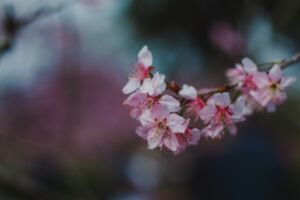 Cressy and the cherry blossom are companions, each nurturing the other. Acting as his guide, Cressy confides in the cherry blossom which, in response, helps him to find the answers to life’s questions and learn how to extend this relationship to the people closest to him. After finding love with a local Italian woman in Florence, Cressy once again returns to nature for comfort in the aftermath of her death. He replaces the cherry blossom with a citrus at the pensione which helps him through his grief.
Cressy and the cherry blossom are companions, each nurturing the other. Acting as his guide, Cressy confides in the cherry blossom which, in response, helps him to find the answers to life’s questions and learn how to extend this relationship to the people closest to him. After finding love with a local Italian woman in Florence, Cressy once again returns to nature for comfort in the aftermath of her death. He replaces the cherry blossom with a citrus at the pensione which helps him through his grief.
Cress stayed on the terrace with his citrus tree, surrounded by scent and blossom. Tree said few words and together they watched the pungent flare of dawn, the glare of the midday trope, the drift of dusk. Cress slept a lot. Cress kept dreaming of butterflies.”
Sarah Winman – Still Life
Kostas is quite unusual as he places equal value on humans, plants and animals – we all inhabit the same world and have the right to exist, as befits the use of the fig tree narrating parts of the story. In this way, Kostas is almost more like a tree than a human, as people seem more intent on destroying each other than living peacefully together.
“Even trees of different species show solidarity with one another regardless of their differences, which is more than you can say for so many humans.”
Elif Shafak – The Island of Missing Trees.
The novel is peppered throughout with accounts of various creatures interacting with the fig tree, such as the honeybee, the butterfly, the fruit bat and the ant.
Multi-functional in its purpose, the fig tree is important to Defne, Kostas and Ada as individuals but also as a separate entity in its own right. It forms the bedrock for the relationships between all three characters as it has been there from the beginning of Kostas and Defne’s emerging love affair and follows through Ada’s birth and Defne’s untimely death. The healthy cutting that Kostas takes from the dying tree in the taverna symbolises his and Defne’s new life in England. Its origins remain in Cyprus, just as Ada’s do. The fig tree is a constant presence as she navigates the truth behind her identity – an identity that is firmly rooted in a place she has never visited but has shaped who she is.
bedrock for the relationships between all three characters as it has been there from the beginning of Kostas and Defne’s emerging love affair and follows through Ada’s birth and Defne’s untimely death. The healthy cutting that Kostas takes from the dying tree in the taverna symbolises his and Defne’s new life in England. Its origins remain in Cyprus, just as Ada’s do. The fig tree is a constant presence as she navigates the truth behind her identity – an identity that is firmly rooted in a place she has never visited but has shaped who she is.
Each of these novels explores the above themes in their own unique way. Both the fig tree and the Japanese cherry blossom offer stability and resilience even when surrounded by chaos caused by humanity. During these uncertain times, with climate change being such a threat to our planet, these novels serve as a reminder of how much we need nature and how inextricably linked we are with it.

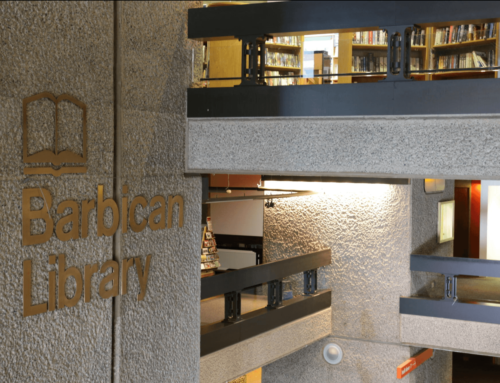
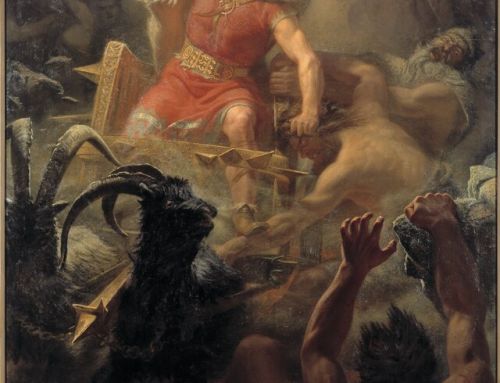
Leave A Comment